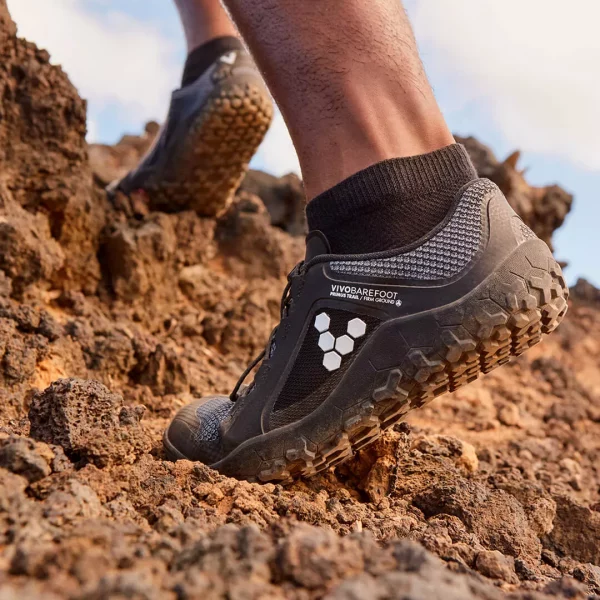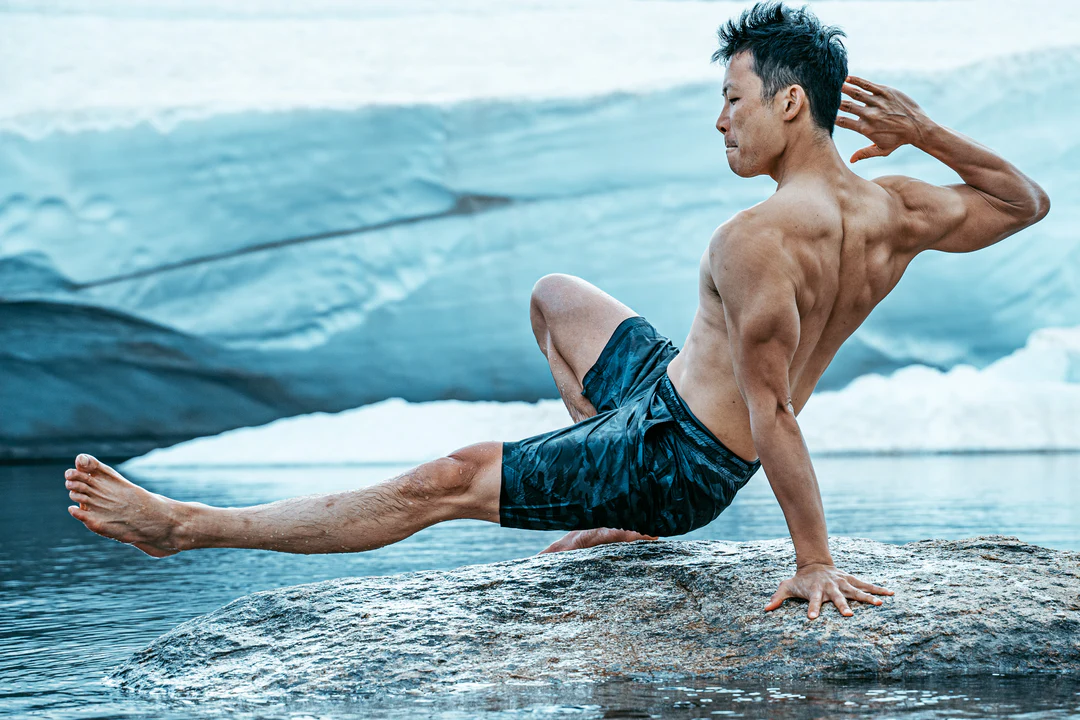【Beginner's Guide to Hiking】Learn how to choose the right barefoot hiking shoes, 6 things to consider when buying hiking shoes, and popular hiking shoe recommendations.

Hong Kong has some beautiful nature and great scenery . On autumn weekends, many people choose to go hiking. To immensely enjoy the beauty of nature, it's important to choose your hiking gear carefully. A suitable pair of barefoot hiking shoes can help ensure your safety and foot health, allowing you to complete your hiking journey comfortably. Today, let's discuss how to choose the right hiking shoes for yourself.

1) When purchasing barefoot hiking shoes, you need to consider the following factors:
There are various hiking shoe recommendations available in the market. If you're feeling overwhelmed and unsure where to start, you can consider purchasing hiking shoes based on the following methods:
1. Foot Size: Having a properly fitted pair of hiking shoes is crucial for your overall hiking experience. Before measuring your foot size, wear the socks you intend to use during your hiking journey. Additionally, it's recommended to try on shoes in the afternoon or evening when your feet are most swollen, as this will closely resemble your foot size during hiking.。
2. Shoe Shape: When trying on hiking shoes, pay attention to the space for your toes to ensure they aren't being squeezed. It's advised to go for barefoot hiking shoes with a wide toe box, which allows your toes to spread out. This provides more support to your feet and helps maintain balance while walking on steep terrains.
3. Traction: Hiking shoes should have good traction, such as waffle sole or pronounced patterns on the outsole. These features create friction with the ground, providing slip resistance and ensuring stability while hiking。
4. Materials: The typical hiking shoes found in the market are made from leather, synthetic fibers, and mesh fabric. Leather shoes are generally more durable but may require a longer break-in time. Synthetic material shoes are lightweight but may be less durable. Mesh fabric shoes are breathable and most lightweight, but they offer less durability and protection.
5. Sole Flexibility: Some hiking shoes on the market may have thick and rigid soles, which can affect the contact between the plantar nerves and the ground, making it difficult for your feet to grip properly. It is recommended to choose barefoot hiking shoes with softer soles, as this effectively enhances balance and agility, making you less prone to injuries while hiking.
6. Choose according to the trail: Different types of hiking trails will require different types of hiking shoes. However, if your route involves rugged terrain, you may need hiking shoes with better support.
2) How to choose hiking shoes based on the trail?

Choosing the right hiking shoes for different trails is an essential part of ensuring comfort, safety, and performance. Here are the recommended hiking shoe choices based on different types of trails:
1. Short Hikes on Even Terrain: For easy trails with even surfaces, lightweight barefoot hiking shoes or trail running shoes are suitable. You should pay attention to the traction of the sole and the breathability of the shoe upper.
2. Long-distance hiking: When you need to hike continuously for two or more days, possibly carrying a heavier backpack and walking on rugged terrain, it may be necessary to have higher support and more durable hiking shoes. It is recommended to choose shoes with higher ankle support and good waterproofing features to keep your feet dry.
3. Hiking on rocky terrain: If you need to hike on rocky terrain, in addition to considering the traction of the outsole, it is highly recommended to choose hiking shoes with toe protection features. This will help prevent toes injury in case of accidentally kicking rocks.
4.Hiking in wet environments: If you are hiking during the rainy season, it is important to choose waterproof hiking shoes or mid-cut boots to keep your feet dry. Alternatively, you can also consider applying a layer of waterproof spray on your shoes to create a waterproof barrier.
5. Hiking in cold weather: For hiking in cold weather, it is recommended to choose boots with thick insulation and a waterproof layer to keep your feet dry and warm.
6. Trail running: If you are going trail running, it is advised to choose lightweight trail running shoes that provide sufficient traction on the outsole. Look for shoes that offer good breathability to keep your feet comfortable and flexible during your run.
3) The main differences between barefoot hiking shoes and traditional hiking shoes are:
Many hiking shoes on the market are designed with a strong emphasis on protection, featuring rigid toe caps and thick soles. These designs were initially intended to protect our feet from kicking hard objects and provide comfort throughout the hike. However, when the sole becomes excessively thick, it can reduce flexibility and sensitivity in the foot. When our feet can't grip the ground properly, our agility and balance may weaken, making us more prone to injuries.
Barefoot hiking shoes adhere closely to the natural shape of the human foot. With thinner soles compared to regular hiking shoes, they allow our feet to better feel the ground, adapt to different terrain conditions, and respond to various conditions. By utilizing the intrinsic strength of foot muscles, it helps reduce the risk of injuries. Additionally, the design of barefoot hiking shoes allows for greater flexibility, with a wider toe box that allows toes to splay and grip the ground. This enables the foot arch muscles to be trained and strengthened while hiking, promoting foot's natural abilities.
4) How to maintain barefoot hiking shoes?

When wearing new shoes for the first time, it is advised to use a protective spray to maintain the leather and enhance the water resistance of the shoes. Before spraying, remove the shoelaces and make sure to cover all the hidden corners and concealed areas of the shoes, especially around the tongue.
2. Shoe care after use
After every hiking trip, it is important to loosen the shoelaces, remove the insoles, and ensure that the shoes are thoroughly dried. Even during long hikes, it is essential not to neglect shoe care. Take breaks during the hike or in the evenings to clean and maintain your shoes. If your hiking shoes are particularly dirty, it is recommended to use a soft-bristle brush and warm water to wash off the mud and dirt from the shoe surface. It is advised to use a specialized hiking shoe cleaner for this purpose.
3. Leather Care
If the lining of your hiking shoes is made of genuine leather, it is necessary to regularly apply moisturizing conditioner or hand lotion to gently wipe and maintain it. The salt content in sweat can corrode the genuine leather lining, causing it to become dry, brittle, and stiff.
4. Shoe care during Humid Weather
Even for everyday wear, if you are in a humid environment, such as summer in Hong Kong, it is important to promptly and thoroughly air dry your shoes. Natural leather absorbs a significant amount of moisture, and if the accumulated moisture inside the shoes is not completely dried, it can lead to unpleasant odors and diminish the effectiveness of protective care products.
Explore the best barefoot hiking shoes at Barefoot Asia Now!
5) The Best barefoot hiking shoe brands in Barefoot Asia
1. Vivobarefoot - Primus Trail II FG

Vivobarefoot's Primus Trail II FG is a highly breathable trail running shoe with a speed lacing. It has a wide toe box design, similar to barefoot running shoes, and has a lightweight and flexible sole that allows for a wide range of motion, enhancing flexibility during trail running. It significantly improves foot grip and enables quick adaptation to different terrains.
2. Be Lenka - Trailwalker 2.0

Be Lenka Trailwalker 2.0 is considered the most stylish option among barefoot hiking shoes! It comes in various colors, allowing you to easily match it with your preferred outdoorsy outfits. It is suitable for basic hiking and lightweight climbing. The leather upper is water-resistant, and the lightweight, flexible sole allows you to fully experience the sensation of the ground beneath your feet, greatly enhancing the enjoyment of hiking. The new Trailwalker 2.0 series has upgraded its inner design and added a removable insole, catering different barefoot enthusiasts needs.
3. Shamma Sandals - Trailstar Maximus

For light hiking in the summer and to fully enjoy the natural environment around you, Shamma Sandals Trailstar Maximus barefoot hiking sandals are recommended. These sandals are made in the USA and designed to provide a comprehensive barefoot experience. The sole features specially designed treads that enhance traction and prevent slipping. The shoelace design allows easy wearing and removal, ensuring the fun of wearing barefoot at any time.
4. Earth Runners - Alpha Lifestyle

If you don't hike often but are still looking for a pair of barefoot sandals that can be used for both daily wear and outdoor activities, Earth Runners' Alpha Lifestyle sandals are recommended. They feature Earth Runners' distinctive grounded conductive lifestyle laces and are popular among minimalism enthusiasts due to their minimalist design. The simple lacing design ensures a secure fit for your feet, allowing you to freely explore nature while providing some protection.

6) FAQ about hiking barefoot shoes:
1.Should I buy a proper size or go half a size up for hiking shoes?
Many people have a misconception that hiking shoes must be purchased in a size bigger than their regular shoes. However, shoe sizes can vary among different brands, manufacturers, and shoe models, so relying solely on shoe size is not accurate. It is recommended to try on hiking shoes before purchasing, preferably wearing thick hiking socks or the socks you typically wear for hiking. Additionally, it's best to try on shoes in the afternoon or evening when your feet are more likely to be slightly swollen, as this will better replicate the conditions of your feet during hiking and help you find the right size more accurately.
2. Do hiking shoes need to be waterproof?
In general, waterproofing and breathability are two conflicting features in hiking shoes. If you don't have a habit of hiking in the rain and usually hike with a round trip in the day, you may not necessarily need waterproof hiking shoes. It is recommended to choose shoes with high breathability, soft and flexible soles, as this improves balance and agility during hiking and prevents injuries. However, if you are planning a multi-day backpacking trip with varying elevations and terrains, it is advisable to choose waterproof hiking shoes. In case of encountering muddy or rainy conditions, you can continue your journey with dry foot the next day.
3. How to choose between high-cut and low-cut hiking shoes?
High-cut waterproof hiking shoes are suitable for routes that involve water crossings. They offer sufficient waterproofing capabilities and provide adequate ankle protection, reducing the risk of injuries. On the other hand, low-cut waterproof hiking shoes are more suitable for relatively easy terrains. High-cut waterproof hiking shoes tend to be bulkier, while low-cut waterproof hiking shoes are lighter and more agile.
By reading this article, you've learned more about barefoot shoes and gained valuable insights in selecting a perfect pair. If you're interested in knowing more about barefoot shoes, check out the Barefoot Asia website. What’s more, stay tuned with the latest information by subscribing to our Facebook.






